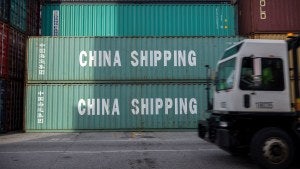The United States Pursues Its Lithium Independence

The hunt for the key battery component is only the beginning of the story.
For at least the next 10 years, lithium is set to be the beating heart of the clean energy transition. Its supply was largely taken for granted until 2022 when prices nearly quintupled ($35, compared to historic prices of roughly $6 per pound), setting off a global scramble across all stages of the supply chain. Prices have since returned to previous norms, but the lithium price spike reshaped the market for the long-term in the United States and around the world.
That 2022 price run-up coincided with an acute awareness of supply chain vulnerability brought on by the COVID-19 pandemic. Together, these sparked a massive round of exploration for domestic deposits around the globe with noteworthy discoveries in the United States, India, and others. As S&P Global notes, junior explorers around the world received windfall investments in 2021. In the Asia-Pacific alone there was a 659% year-on-year increase. Reserves and resources of lithium have nearly doubled, going from 139 million tons to 255 million tons, since 2018.
While exploration has gathered pace domestically, lithium resourcing has never really been an issue for the United States. It is home to some of the largest known deposits in the world, including the find at the McDermitt caldera. The problem is—and will remain—getting that lithium out of the ground and into the supply chain. Only a single lithium mine is currently in operation in the United States, and it opened in the 1960s. A second, Thacker Pass in Nevada, is slated to open in 2028. But the push to resume more widespread mining is running up against strong opposition, driven by very real concerns about environmental degradation, water usage, and the effects of both on local populations. How those deleterious effects will be balanced with the industrial and national security demands for lithium in the United States remains an open question.
"Lithium resourcing has never really been an issue for the United States. The problem is—and will remain—getting that lithium out of the ground and into the supply chain."
But the hunt for lithium is only the beginning of the story for the United States. The 2022 price spike created acute awareness in Washington of China’s dominant position in lithium processing and battery production. According to the International Energy Agency, roughly three-quarters of the manufacturing capacity for batteries in 2022 was located in China. That same year, the United States imported $9.3 billion worth of lithium-ion batteries from China. The next closest trade partner was South Korea at $1.3 billion. In a 2021 report from the U.S. Department of Energy, the United States produced just 8 percent of the global total gigawatt hours in 2020 and that was expected to increase to just 9 percent by 2025.
This discrepancy has set into motion an effort to fully onshore a lithium and battery supply chain to secure a mineral critical to the green energy transition and batteries that will be critical in powering the radios, drones, and aircraft essential to national security.
In addition to efforts to revive lithium mining in the United States, the Inflation Reduction Act (IRA) has looked further downstream in the supply chain. Fueled by tax incentives and massive government subsidies, lithium refineries are either planned or already under construction in Oklahoma, Tennessee, Texas, and South Carolina.
Once operational, those midstream plants are expected to process roughly 250,000 tons of lithium per year. That is still far short of projected US demand in the coming years, but the hope is that processing plants in Australia, Canada, and other allied and partner countries can begin to diversify the supply chain away from China, where roughly 70% of the world’s lithium is now processed.
At the same time, the Biden administration is taking steps to energize lithium battery production in the United States. The primary driver of this has been the IRA and a growing appetite across the country for industrial policy aimed at competing with China.
The broader question is: will it work?
The initial returns are positive. The IRA and its domestic content rules are driving new investments from companies around the world. South Korea’s LG is investing $5.5 billion in a plant in Arizona. Samsung is putting $3.2 billion into a plant in Indiana. Tesla is expected to reap large rewards as it is already producing batteries in the United States.
The longer-term, of course, is anyone’s guess. China is not only leading the world in lithium processing and battery production. It is both using that market position to keep prices low to deter competition from entering the market and simultaneously moving ahead with research into new materials that may alter the battery landscape.
This will be the puzzle for the United States and its allies and partners: how can they challenge China’s market-dominant position in current lithium-ion technology and also catch up in the advanced material sciences of battery chemistry and production? As it stands, the United States seems poised to be stuck chasing the game.


Related Content
 Global Economy
Global Economy
The eventual extraction from Wyoming’s Halleck Creek site will be much smaller than the reported 2.34 billion tonnes.
 Tech and Science
Tech and Science
Why microchips are at the heart of the geopolitical contest between the US and China.
 Climate and the Environment
Climate and the Environment
Robert Muggah joins the Eurasian Climate Brief to discuss the issues around the production and supply of rare earth minerals amid the Russia-Ukraine war.
 US Foreign Policy
US Foreign Policy
The public generally does not see current US trade policies toward China as benefiting Americans.